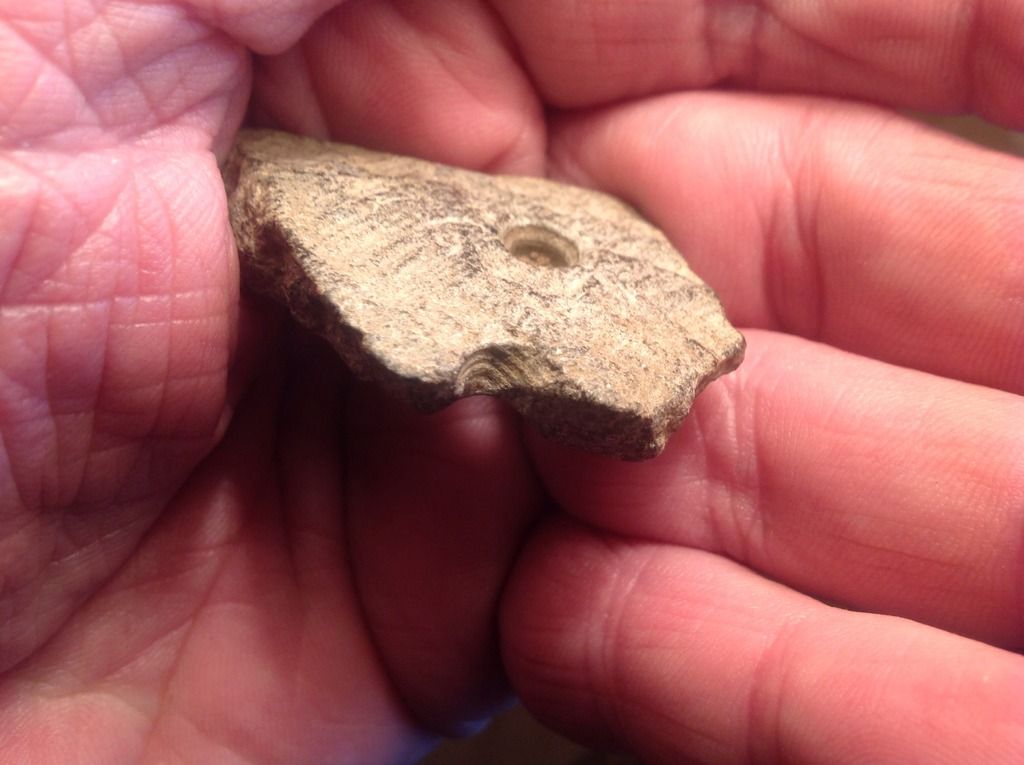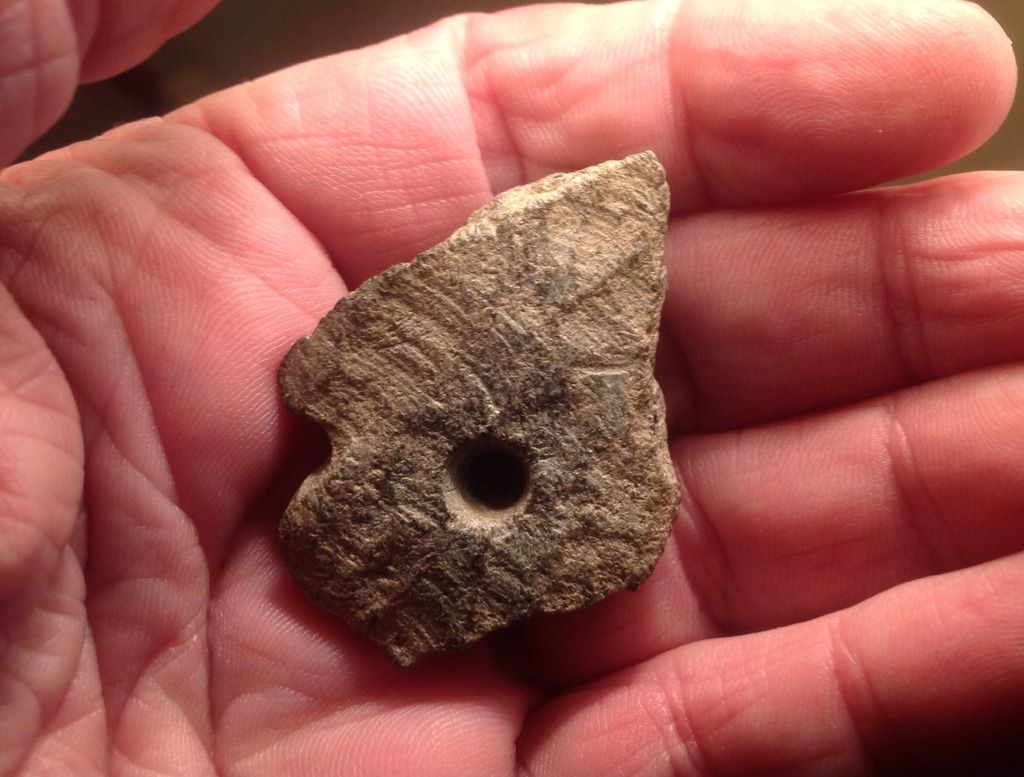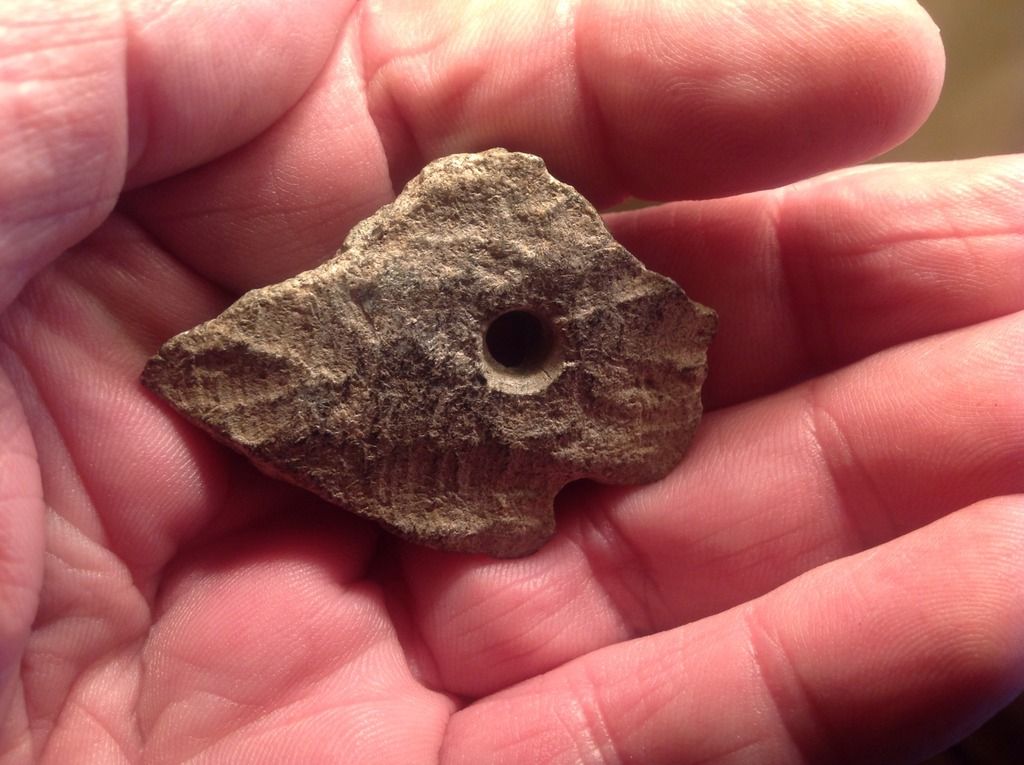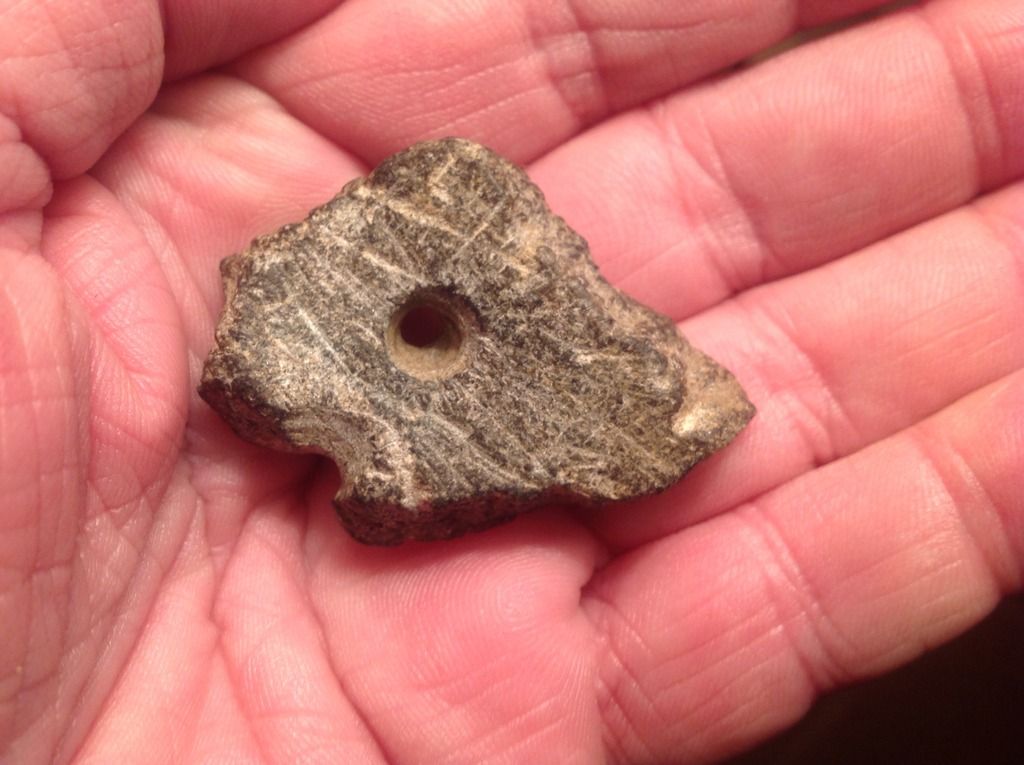This one always made me scratch my head a bit. I understand repair holes. There are two in this sherd, one of which is broken out, as seen in this photo:

It's a thin sherd, I imagine a vessel sherd. In the above photo, the top surface is the outside surface of the vessel.
The odd part is that it looks like there are drill marks parallel to the outside surface :huh:
Very shallow, and I'm guessing that they cannot actually be drill marks, but it's a surface texture that is man made, whatever it represents. They sure look the part, but if so they're running 90 degrees from the drilled holes :blink:


It's a thin sherd, I imagine a vessel sherd. In the above photo, the top surface is the outside surface of the vessel.
The odd part is that it looks like there are drill marks parallel to the outside surface :huh:
Very shallow, and I'm guessing that they cannot actually be drill marks, but it's a surface texture that is man made, whatever it represents. They sure look the part, but if so they're running 90 degrees from the drilled holes :blink:






Comment